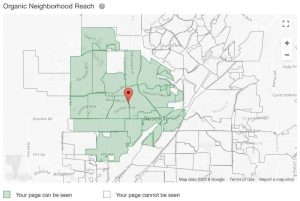Google’s infamous Mobilegeddon has arrived (April 21, 2015). You mean you haven’t heard about it? It’s big news for every website owner who cares about being found in search.
In its February 26th announcement, Google Webmaster Tools (GWT) explained its plans to roll out an algorithm update that would favour mobile-friendly sites in rankings.
In a newer blog post entitled ‘Rolling out the mobile-friendly update,’ GWT summarized the update nicely.
We’re boosting the ranking of mobile-friendly pages on mobile search results. Now searchers can more easily find high-quality and relevant results where text is readable without tapping or zooming, tap targets are spaced appropriately, and the page avoids unplayable content or horizontal scrolling.
 GWT published this helpful graphic to demonstrate the difference between a mobile-responsive site and a site that is not designed for the mobile viewport.
GWT published this helpful graphic to demonstrate the difference between a mobile-responsive site and a site that is not designed for the mobile viewport.
What you need to know about the mobile-friendly update
There are three key things to know about this algorithm update.
- Affects only search rankings on mobile devices
- Affects search results in all languages globally
- Applies to individual pages, not entire websites
What does that actually mean for you and your website? If you look at your website on a mobile phone and it looks mobile-friendly rather than a tiny version of your desktop site, you probably have a responsive site. But, you may just have a mobile version of your desktop website, which is not the same thing.
For example, your website may be set up with www.your-domain.com and m.your-domain.com, which means anyone using a phone to access the main domain is likely to be shown the mobile version.
A responsive website is one that changes shape depending on the size of the screen. All the content is created once and there is only one domain name, but the stylesheet takes into account different screen sizes. For example, a three-column desktop design becomes one single column on a mobile.
Why is Google favoring mobile-friendly sites?
Around a quarter of Internet users are searching on mobile phones. By the time you read this, that figure could be a lot higher.
The search engine is keen to ensure its users have a good experience. It doesn’t want to show search results on mobiles for web pages that will be hard to read on a phone. It wants to prioritise things that will be useful.
So, if your website doesn’t pass the mobile-friendly test, you may find it hard to achieve visibility in search results, which will impact the traffic your site attains.
Test your site in the mobile-friendly testing tool
The best way to see whether Google considers your site to be mobile friendly is to run it through GWT’s mobile friendly testing tool.
This website – the one you are reading – uses a WordPress theme that is responsive, so I’m pleased to say that the testing tool likes the site.

The testing tool includes a screen shot of how the website looks to Google. If this screen shot doesn’t look right, you can investigate here.
You can read a lot more information in Google’s mobile user guide.

If your website fails the test, the testing tool provides some useful advice for you to investigate and solve the problem.
(178)
Report Post



